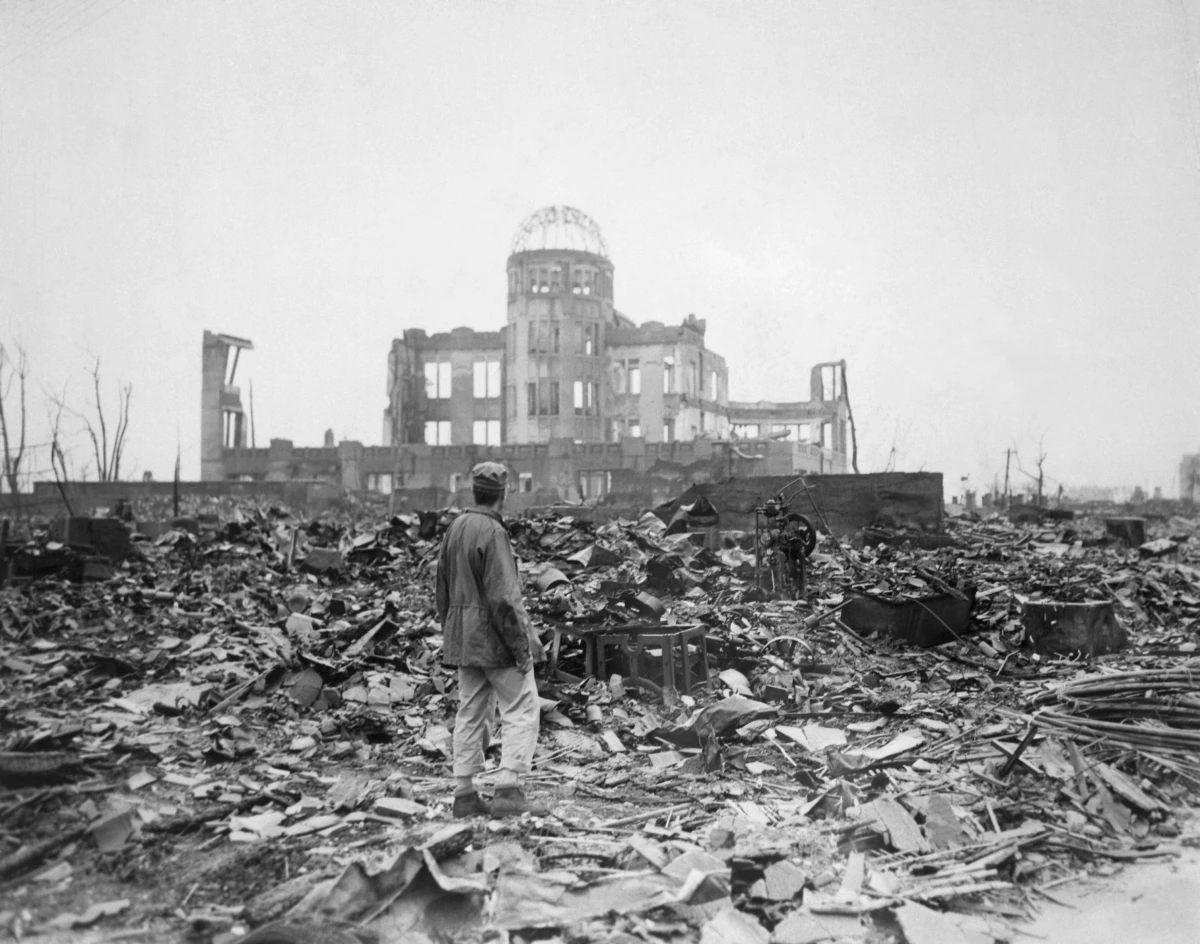Imagine a world forever changed in a flash. On August 6, 1945, the atomic bomb plunged Hiroshima into chaos, etching its horrors into history. Photographer Yoshito Matsushige, compelled to document the unthinkable, captured images that would become iconic symbols of that tragic day. His photos, a poignant “photobomb” of history, offer a chilling glimpse into the human cost of war and the resilience of the human spirit.
Capturing the Unimaginable: Matsushige’s Lens
Local photographer Yoshito Matsushige found himself facing the devastation of Hiroshima just hours after the atomic blast. He understood the weight of the moment, the need to bear witness even as the world around him lay in ruins. One of his most poignant photographs, taken near the Miyuki Bridge, shows a bandaged policeman diligently writing relief certificates for injured schoolchildren. The children’s faces, etched with pain and resilience, reflect the profound impact of the event.
Matsushige later admitted the difficulty of capturing such suffering, but he recognized the importance of showing the world the harsh realities of Hiroshima. His photos transcended mere documentation, becoming powerful testaments to the human cost of war.
[Did you know about the daring stalag luft escape during World War II? The audacious plan involved prisoners of war tunneling out of a German POW camp.]
A City Scarred: The Hiroshima Shadows
The atomic bomb’s impact on Hiroshima went beyond immediate destruction, leaving behind eerie reminders known as the “Hiroshima shadows.” These weren’t shadows in the traditional sense, but rather lasting marks where the intense heat and radiation bleached surfaces, except where objects or people had stood.
[The kentucky goblins are an unexplained phenomenon that has haunted the state of Kentucky for centuries.]
Matsushige’s photographs captured these shadows, providing chilling visual evidence of the blast’s power and the people who vanished in an instant. Sadly, most of the original shadows have faded over time due to weather and reconstruction. However, some were meticulously preserved at the Hiroshima Peace Memorial Museum, standing as stark reminders of the devastation.
Can you still see the Hiroshima shadows today? While the original shadows are largely gone, their impact continues to resonate through photographs, historical accounts, and the ongoing fight for peace. They serve as a somber reminder of the atomic bomb’s devastating power and the enduring human cost of conflict.
The Hiroshima Girl: Sadako Sasaki’s Story
Two-year-old Sadako Sasaki was just over a mile from ground zero when the bomb detonated. She survived the initial blast but became one of the many children who would later face the silent killer: radiation-induced leukemia.
At age 11, as Sadako bravely battled her illness, she found hope in an ancient Japanese legend. It was said that folding 1,000 origami cranes would grant a wish. For almost a year, Sadako diligently folded cranes, using any scrap of paper she could find. Despite her efforts and the hope they represented, she tragically passed away at the age of 12.
Today, Sadako’s story has transcended borders, becoming a global symbol of peace. The origami crane, forever linked to her resilience and the innocence lost, serves as a reminder of the devastating impact of war, especially on children.
[In the remote and enigmatic town of kapustin yar, hidden among the vast Russian steppes, lies a series of secrets that have captivated the imaginations of historians and conspiracy theorists alike.]
The Unseen Victims: Babies of Hiroshima
The atomic bomb didn’t discriminate, but its impact on babies was particularly devastating. Their developing bodies, far more susceptible to radiation, suffered unimaginable consequences. Many perished from injuries or radiation sickness, while others faced lifelong challenges – increased cancer risks, developmental issues, and the unseen scars of trauma.
The babies of Hiroshima, often overlooked in the historical narrative, became a living testament to the bomb’s indiscriminate cruelty. Their stories, though heartbreaking, remind us of the urgent need for peace and the devastating legacy of nuclear weapons.
Whispers Before the Storm: Did the US Drop Leaflets?
Days before the bombing, the US military scattered leaflets, known as “LeMay Leaflets,” over Hiroshima and other Japanese cities. While these leaflets warned of impending attacks and urged citizens to evacuate, they did not explicitly mention the atomic bomb.
This omission has ignited decades of debate. Did the leaflets constitute a genuine warning? Were they a sincere attempt to minimize civilian casualties, or did they fall short of ethical obligations in warfare? Some historians believe they were primarily propaganda tools designed to undermine Japanese morale.
The true intent and efficacy of the LeMay leaflets remain shrouded in controversy. They stand as unsettling reminders of the complexities of war, the ambiguity of communication, and the enduring ethical dilemmas surrounding the use of such devastating weapons.
A Legacy in Images: Examining the Impact
Matsushige’s photographs of Hiroshima, while difficult to confront, provide invaluable insights into one of history’s darkest chapters. They compel us to remember, to learn, and to strive for a future free from the horrors of that day. Studying these images, we can explore:
- Ethical Dimensions of War Photography: How do photographers balance documenting truth with respecting the dignity of those who suffer?
- Shaping Public Perception: How have images like Matsushige’s influenced our understanding of the Hiroshima bombing and its aftermath?
- Amplifying Survivor Voices: What can we learn from the stories of those who experienced the bombing firsthand, and how can we ensure their voices are heard?
By delving into these questions, we honor the legacy of survivors and acknowledge the enduring power of photography to shape our understanding of the past and inspire action for a more peaceful future.
















